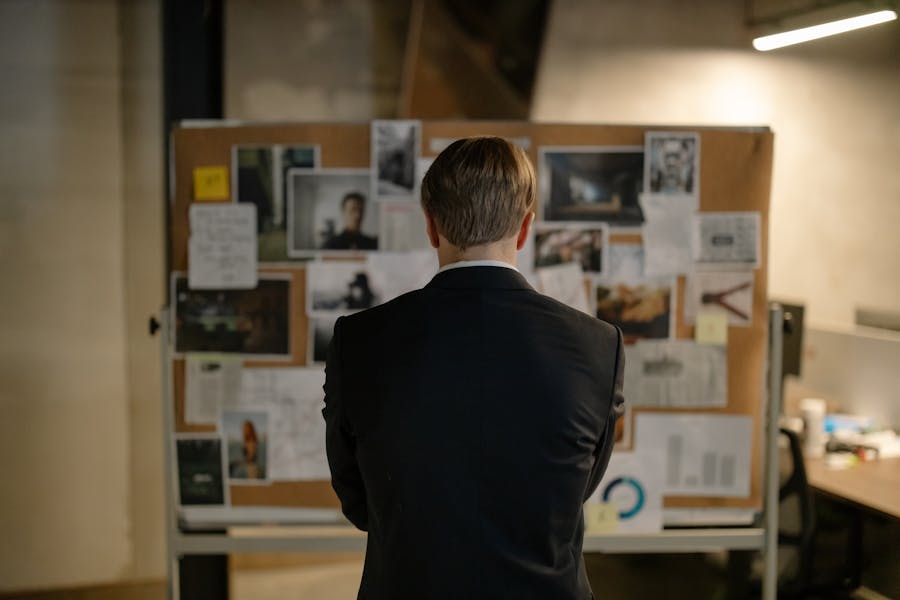In both civil and criminal trials, the courtroom is a space where facts, stories, and interpretations converge. But in many cases, the clarity of those stories and their ability to persuade a judge or jury can hinge on something more powerful than words: visual evidence. From photos and video footage to expert diagrams and 3D renderings, well-prepared visuals can make legal arguments more compelling, more understandable, and far more convincing.
In an age where we consume information visually, through social media, streaming content, and infographics, it’s no surprise that courts increasingly rely on the power of images to deliver truth. Whether you’re a plaintiff, a defendant, or an attorney representing either side, understanding the role of visual evidence can be the key to securing a favorable outcome.
Turning Data Into a Persuasive Narrative
The most effective visual evidence doesn’t just present information; it tells a story. A single surveillance frame can capture a critical moment. A time-stamped traffic cam video can prove or disprove alibis. Even cell phone photos from the scene of an incident can dramatically alter the direction of a case.
Raw visuals aren’t always enough. That’s where technology comes in. Today, legal teams can reconstruct vehicle collisions visually with courtroom graphics to help lawyers paint a clearer picture for juries who might otherwise struggle with technical or forensic details. These visual aids reduce ambiguity and transform complex timelines or mechanical descriptions into digestible scenes that viewers can intuitively understand.
Helping Juries Process Technical Information
Many legal cases, those involving personal injury, product liability, or professional malpractice, require an understanding of technical or scientific concepts. Medical records, engineering blueprints, and expert witness testimony are often crucial. But for juries made up of laypeople, this information can be hard to follow.
Visual evidence bridges that gap. For example, a diagram showing the placement of internal injuries alongside an X-ray can make medical testimony more accessible. A 3D animation of a machinery failure can help explain how a workplace accident occurred. By visualizing the invisible, attorneys empower jurors to understand the case on a more intuitive level.
This not only supports comprehension, it helps build empathy. When jurors can literally see the sequence of events or the aftermath of a mistake, they’re more likely to form a genuine emotional connection to the case.
Increasing Credibility Through Professional Presentation
In high-stakes litigation, sloppy visuals can weaken an otherwise solid argument. That’s why legal teams often invest in professionally produced graphics, animations, and timelines. Clean design, realistic renderings, and strategic placement of visuals during trial presentation create a strong impression of credibility and preparedness.
The best visuals align seamlessly with spoken testimony, witness statements, and expert analysis. They are not distractions but clarifiers. When visuals are carefully timed and integrated into courtroom presentations, they enhance witness impact and help keep jurors focused and engaged.
Supporting Digital Evidence in the Modern Age
With the rise of smartphones, wearable tech, and connected devices, many modern cases involve digital evidence such as text messages, GPS records, or app activity logs. Screenshots of chats, maps showing travel patterns, or call history timelines can all serve as visual anchors that support broader legal arguments.
Yet this type of data is often overwhelming in its raw form. Visualizing it through clear graphics and timelines can make all the difference. Attorneys can show patterns of behavior, contradictions in testimony, or verification of events through a simple, curated display.
A timeline showing when a driver received texts, accessed navigation, and finally collided with another vehicle can strengthen a distracted driving claim. These tools convert data points into a coherent visual story.
Strengthening Pre-Trial Negotiation Power
Visual evidence isn’t just for trials; it can play a powerful role in pre-trial negotiations and settlements. When the opposing party sees a compelling video reenactment or a professionally crafted timeline of events, they may reassess their risk of going to court. It’s often more cost-effective for both parties to settle when the evidence appears overwhelming.
In mediation and arbitration, clear visuals can shorten proceedings by helping both sides quickly identify common ground and understand the factual narrative. Instead of lengthy document reviews and witness interviews, key visuals can bring clarity to the case from the start.
Common Forms of Visual Evidence in Court
Attorneys use a wide range of visual tools, including:
- Photographs: Crime scenes, accident sites, injuries, property damage
- Videos: Security footage, dashcams, body cams, incident reenactments
- Charts and Graphs: Financial data, timelines, injury progression
- 3D Animations: Accident reconstructions, medical procedures
- Maps: GPS tracking, proximity to event locations
- Timelines: Sequence of actions or decisions across a specific timeframe
Each of these formats serves a different purpose, and the most effective cases use multiple types of visuals to support the narrative from different angles.
In a world where visuals dominate how we understand and remember information, legal teams must harness the power of visual evidence to make compelling, clear, and credible cases. When done correctly, visuals don’t just support the facts, they elevate them, helping everyone from judges to jurors better grasp the reality of the events in question.


